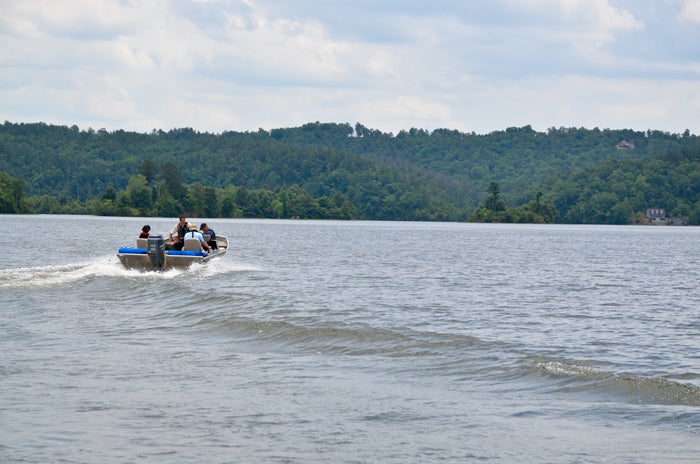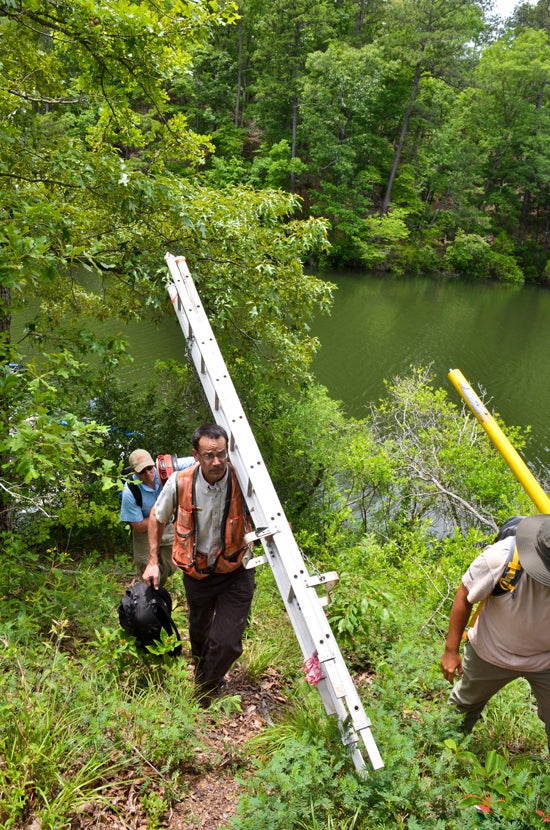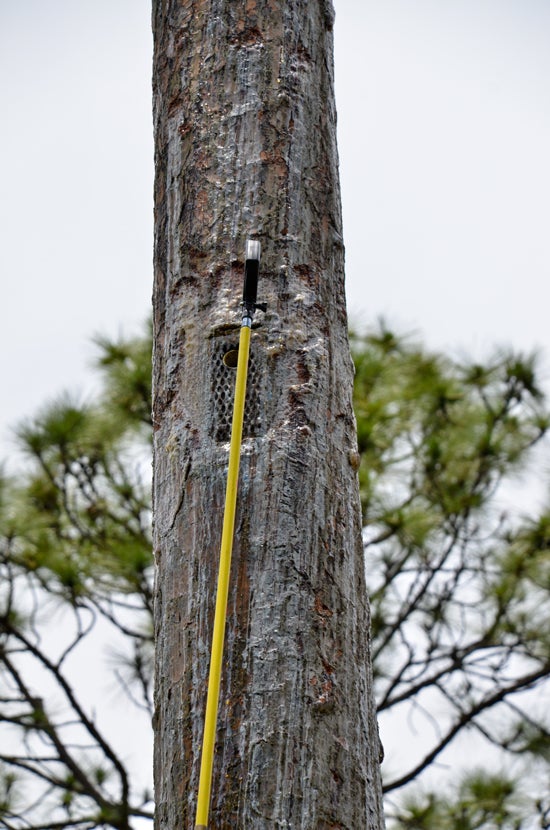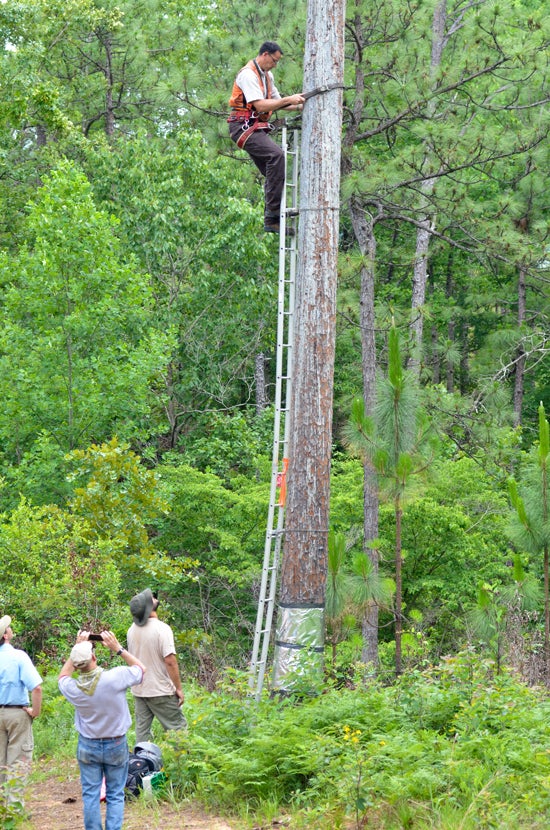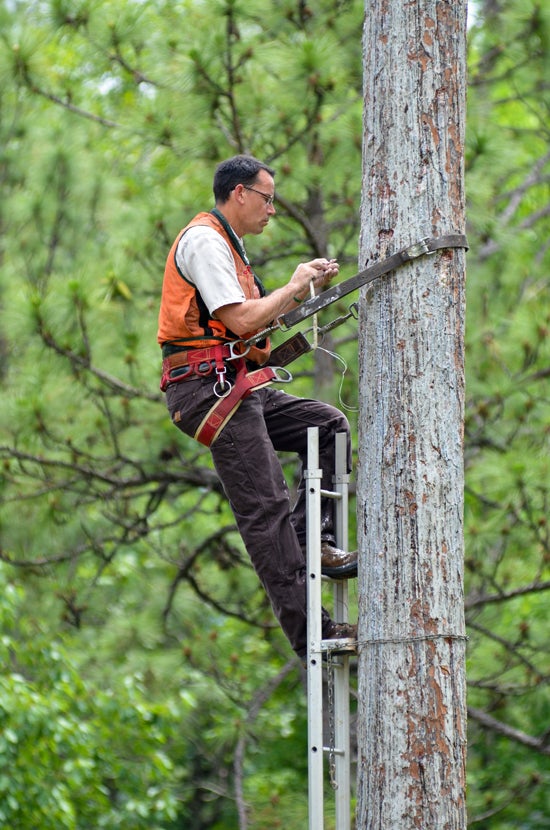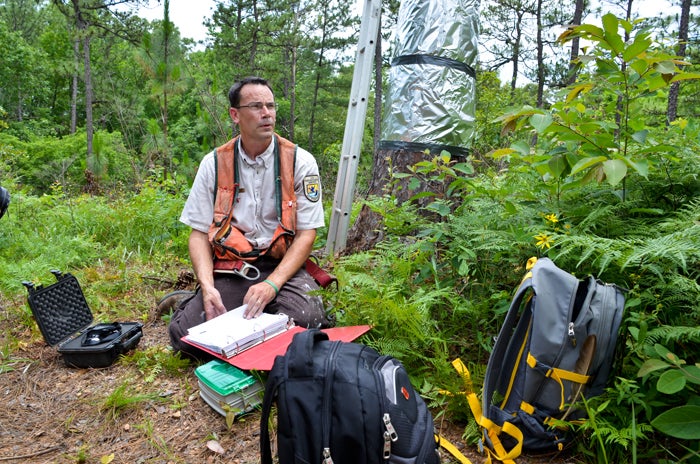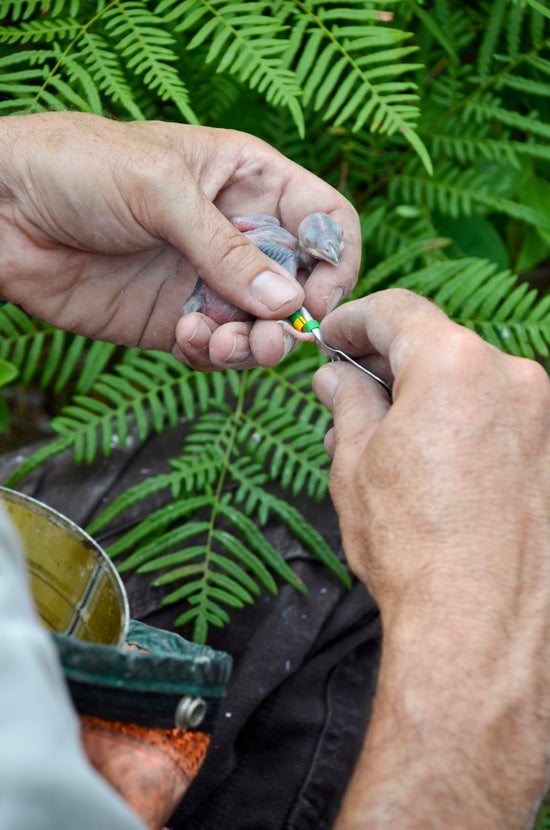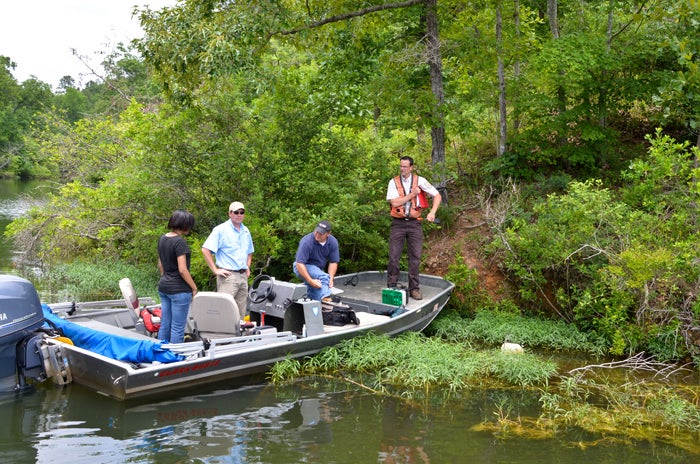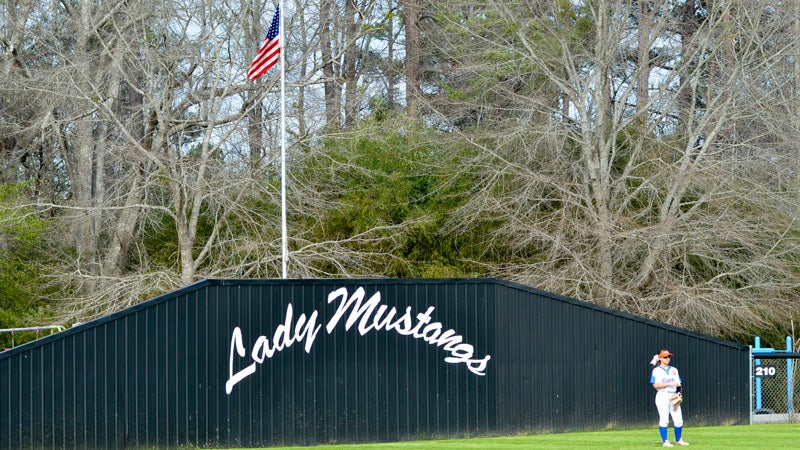Endangered red-cockaded woodpeckers nest near lake
Published 9:19 pm Thursday, June 12, 2014
After fledging, the young birds continue to be fed by adults for up to six months, when most disperse from the territory in which they were hatched. The mortality rate is high for both males (57 percent) and females (68 percent).
Red-cockaded woodpeckers are among the few that excavate in a living tree. Most woodpeckers use dead trees, which are easier to excavate. A red-cockaded woodpecker can excavate a cavity in about six months, while other woodpeckers can excavate a cavity in a matter of days.
Excavating living trees produces sap, which can prevent predators from climbing the tree to steal eggs.
And the red-cockaded woodpecker might manage several excavations at once, since cavities are abandoned if they become infested with mites or invaded by another bird or other animal.
A single cavity can be used for a decade or more.
Artificial cavities, made of wood, metal and PVC pipe, have been revolutionary for a population of woodpeckers whose habitat had shrunk.
“That’s really the technology that has allowed this population to stop declining,” Spadgenske said. “The birds will take to these very readily.”
Spadgenske said there’s not much potential for growth in the population of red-cockaded woodpeckers in the area near Lake Mitchell.
“For the most part, there’s not any more room,” he said about the territorial species.
The long-term goal would be to connect the local population to the one that can be found in the Talladega National Forest.
“That will be a long time before that happens,” Spadgenske said.
- Endangered species: Eric Spadgenske with U.S. Fish and Wildlife Service was accompanied by representatives of property owner Alabama Power and members of the media as he banded two nestling red-cockaded woodpeckers (above), an endangered species, near Lake Mitchell. Left: A camera mounted on an extendable pole is used to see if there are any nestlings in the manmade cavity, before Spadgenske climbs (far left) to bring the birds down to the ground for the work.


